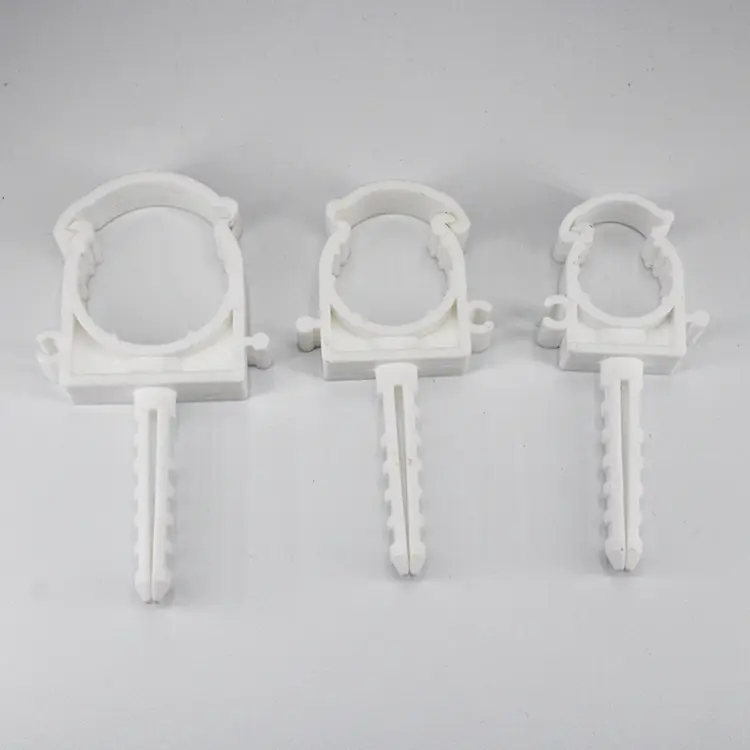In the iteration of global building water supply systems, the standardization of specifications and customization of attributes for PPR (Polypropylene Random Copolymer) cold and hot water pipes have become core topics in the industry. With the coordinated advancement of the EU's CPR (Construction Products Regulation) new regulations, ASEAN's TISI standards, and China's GB/T 18742 standards, key parameters of pipes such as nominal diameter, pressure class, and material formulation have gradually formed a regional adaptation system. When Chinese enterprises participate in global trade, they must not only meet the specification access requirements of different markets but also enhance product competitiveness through attribute optimization.Global Mainstream Specification Systems and Regional DifferencesCurrently, the global PPR cold and hot water pipe market is mainly divided into three systems: the "European Specification System", "Asian Specification System", and "American Specification System". These systems have clear differences in nominal outer diameter, wall thickness deviation, and connection methods, which directly affect the foreign trade adaptability of products.
1. Comparison of Core Specification Parameters (2024 International Mainstream Standards)
|
Specification Dimension
|
European EN 15874 Standard
|
Chinese GB/T 18742 Standard
|
American ASTM F2389 Standard
|
|
Nominal Outer Diameter (dn)
|
20mm-160mm (commonly used: 20/25/32mm)
|
20mm-160mm (commonly used: 20/25/32/40mm)
|
16mm-110mm (commonly used: 16/20/25mm)
|
|
Wall Thickness Deviation
|
±0.3mm (standard wall thickness of dn20mm pipe: 2.8mm)
|
±0.2mm (standard wall thickness of dn20mm pipe: 2.3mm)
|
±0.25mm (standard wall thickness of dn20mm pipe: 2.5mm)
|
|
Pressure Class (S Series)
|
S3.2 (1.25MPa), S4 (1.0MPa), S5 (0.8MPa)
|
S3.2 (1.25MPa), S4 (1.0MPa), S5 (0.8MPa)
|
PN1.0 (1.0MPa), PN1.6 (1.6MPa)
|
|
Connection Method
|
Hot-melt socket (heating time: 18-25s)
|
Hot-melt socket (heating time: 15-20s)
|
Hot-melt socket + mechanical connection (compatible with copper fittings)
|
|
Length Specification
|
4m/6m (fixed length)
|
4m/6m/12m (customizable)
|
3m/6m (fixed length)
|

Core Property Upgrade and Technical Indicator Analysis
The property optimization of PPR hot and cold water pipes has evolved from "basic physical properties" to a multi-dimensional approach encompassing "environmental protection, durability, and safety." The international market has established clearer requirements for pipe material composition, antimicrobial properties, oxygen barrier properties, and other indicators.
1. Material Composition and Recyclability
The EU's "New Circular Economy Action Plan" is pushing PPR pipes into the "recyclable design" phase. The PA15E-1 special material, jointly developed by PetroChina Daqing Refining and Chemical and BASF, retains the basic PPR (polypropylene random copolymer) composition while incorporating 15% recycled PP (derived from crushed and recycled waste PPR pipe). Testing by the German Plastics Association (IKV) shows a stable melt flow rate (MFR) of 0.3 g/10 min (230°C, 2.16 kg), with a performance deviation of less than 5% compared to virgin material. This material is the first PPR pipe raw material to receive the EU "Recyclable Mark" certification. In 2024, when supplying Uponor Europe for a project in the Nordic high-altitude regions, carbon emissions per meter of pipe were reduced by 28% compared to conventional products.
2. Core Properties of Antibacterial and Oxygen-Barrier Properties
The demand for "healthy properties" in the high-end market has driven the functional upgrade of pipes. This product utilizes a dual-layer structure consisting of a "silver ion antibacterial layer + EVOH oxygen-barrier layer":
• Antibacterial layer: 0.8% nano-silver ions are added to the inner surface of the pipe. German DVGW-certified testing demonstrates an antibacterial rate of 99.9% against Escherichia coli and Staphylococcus aureus, with a sustained antibacterial effect for 50 years.
• Oxygen-Barrier Layer: The pipe's middle layer is coated with a 0.15mm thick EVOH (ethylene vinyl alcohol copolymer) with an oxygen transmission rate of less than 0.1g/m²/24h, effectively preventing oxygen permeation and algae growth in the pipe water. This specification of pipe is sold in European retail channels for €12 per meter, nearly 85% of the price of domestic brands. Exports increased by 18% in 2024.
3. Temperature and Pressure Adaptability
The temperature and pressure adaptability requirements for pipes vary significantly across climate zones. These pipes are categorized into two main types: "high-temperature" and "normal-temperature" pipes.
• High-temperature pipe (for hot water pipes): Made from high-purity PP-R (propylene content ≥ 99.5%), it boasts a Vicat softening temperature of 130°C and has passed a 1000-hour hydrostatic pressure test (no cracking) at 95°C and 1.2 MPa. This type of pipe is compatible with high-temperature water supply systems in East Asian regions such as China, Japan, and South Korea.
• Normal-temperature pipe (for cold water pipes): The addition of 5% PE toughening agent lowers the Vicat softening temperature to 110°C and increases impact strength by 30% (no cracking in a -20°C low-temperature impact test). These pipes are primarily intended for normal-temperature water supply applications in Southeast Asia and South Asia. By 2024, this type of pipe is expected to account for 62% of sales in the Asian market.
Future Development Direction of Specifications and Attributes
With the global trend toward carbon neutrality and smart buildings, the specifications and properties of PPR hot and cold water pipes will develop in two major directions:
First, "lightweight specifications." This involves achieving "thin-wall, high-strength" performance through raw material modification. For example, the wall thickness of DN25mm S3.2 grade pipe has been reduced from 3.5mm to 3.2mm, increasing hydrostatic strength by 10% and reducing weight per meter by 9%.
Second, "intelligent property integration." Pressure sensor chips are incorporated into the inner wall of the pipe. While maintaining the mainstream DN20-32mm specifications, data is transmitted to the terminal via Bluetooth. This technology has been piloted in public housing projects in Singapore and is expected to become a standard feature in the high-end market by 2025. Beyond meeting international standards, innovative properties are crucial for building differentiation. This requires not only meeting the "compliance requirements" of different markets but also achieving technological dominance in the global PPR hot and cold water pipe industry chain through material and functional upgrades.





